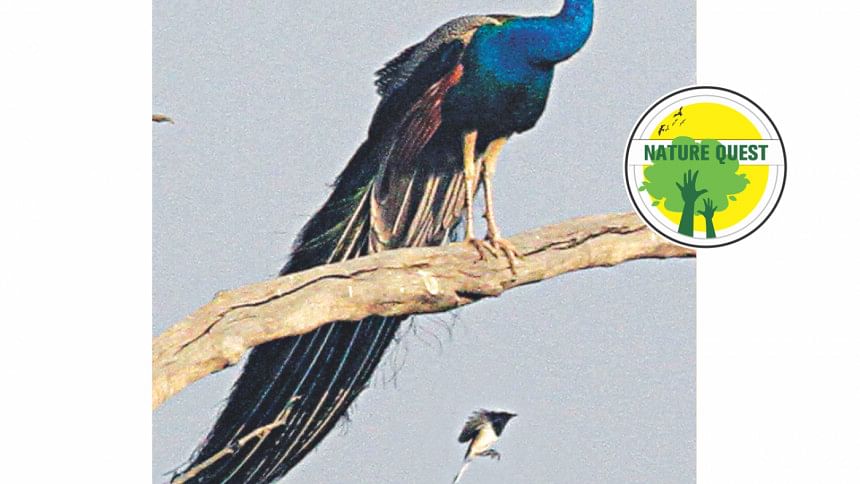Nature Quest: Can we bring peafowls back?

Can we bring the wild peafowls back to Bangladesh? Is it possible for the jostling pedestrians of the bustling capital city to look up and see in amazement a magnificent peacock flying over the skyscrapers? If not today, may be on some auspicious day in future? The time is ripe now to pose these questions to the nature lovers, conservationists and other people of the country. Long lost birds like Bristled Grassbird, Wooly-necked Stork and Black-bellied Tern have recently been rediscovered in the country. That makes it a great time of optimism, rediscovery and reintroduction of the bird.
The peafowls lost their habitats in the forests of Bangladesh recently. The last time a wild peacock was spotted was in 1982 in Madhupur National Park. In 1886, FB Simson, a British author, wrote that the junglefowl and the peafowl are "easy game at Savar". In 1854, Major RC Tytler in his "Miscellaneous notes on the fauna of Dacca" wrote that the peafowls are commonplace in the district. Dhaka was obviously a good place for the peafowls to thrive.
It is, therefore, not too intrepid for us now to consider a reintroduction of peafowls to the wildernesses of our country. After all, these forests were the traditional home of two species of peafowls -- Indian Peafowl and Green Peafowl. Peafowls have been successfully introduced to many other countries far away from its home.
Peafowls are terrestrial birds. They feed on seeds, fruits, insects and small reptiles including snakes. The males hold their flamboyant courtship displays on the ground and the females lay eggs and incubate on the ground. They thrive in forests where the density of large predators such as tigers, leopards, and jackals is not high. Bangladesh has many forests with none or very few of those predators. If introduced now, the peafowls have a fair chance of colonising the forests like Bhawal National Park, Baraiyardhala National Park, Chunati Wildlife Sanctuary, Dudhpukuria-Dhupchara Wildlife Sanctuary, Kaptai National Park, Khadimnagar National Park, Madhupur National Park, and even Lawachara National Park.
Green peafowl is a globally "endangered" species and its population in the wild is not large. The Indian peafowl, however, is abundant in India. For a reintroduction in Bangladesh, it should be easy to corral sufficient number of this species from India. Before reintroduction we have to find what caused the extirpation in the first place, how many of those causes still persist, and how to remove those causes, especially the major ones. An initiative from our forest department may be necessary in this regard.

 For all latest news, follow The Daily Star's Google News channel.
For all latest news, follow The Daily Star's Google News channel. 



Comments